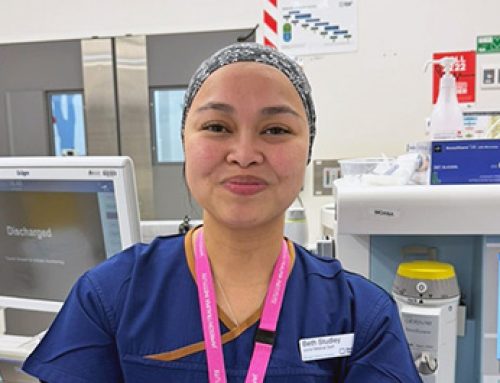From teeth to feet – my journey from dentistry to foot disorders
By Rangi Weerasuriya, AusHSI PhD Scholar

I recently completed my PhD confirmation at AusHSI. I feel incredibly fortunate to have had the opportunity to join this research centre, which is full of supportive people in a friendly environment.
I graduated as a dentist from Sri Lanka and, a few years after graduation, I changed my career to public health after obtaining a postgraduate qualification in public health dentistry.
My PhD project focuses on identifying the key risk factors for people hospitalised with foot disease and I am supervised by Associate Professor Peter Lazzarini, Associate Professor Susanna Cramb and Dr Yuqi Zhang.
During my first meeting with Pete, he asked me why I am interested in this project. I shared that I like this topic because of its relevance to public health. As a public health professional with more than 10 years’ experience, I find this project a great opportunity to improve community health for people with foot related conditions. Being a mathematical enthusiast, statistical analysis has always been the part of public health that excites me the most. Luckily, I think my project really brings together both my passions, plus working at AusHSI has been an added bonus because of the wonderful team and the friendly work environment.
Foot disease collectively includes foot ulcers, foot infection, foot conditions related to poor blood circulation (ischaemic) and poor sensation of feet (neuropathic), which are a leading cause of hospitalisation, amputation and death worldwide. However, it is noteworthy that most studies conducted worldwide have predominantly focused on foot-related hospitalisations of populations with diabetes. Diabetes foot disease hospitalisations have been found to be highly preventable through early identification of risk factors and timely interventions.
By contrast, there is no evidence on foot-related hospitalisation of people in the community who do not have diabetes. Therefore, it is crucial to conduct further studies on foot-related hospitalisation in all people (with and without diabetes), drawing special attention to the risk factors for foot-related hospitalisation in people without diabetes. To address these gaps in knowledge, I plan to analyse linked data from hospitals about people admitted for foot disease, together with data collected at specialist outpatient foot clinics. I intend to find out the risk factors leading to these hospitalisations and develop a model to predict the hospitalisation risk of a person who attends a foot clinic. Additionally, I plan to calculate the cost of care for managing people with foot disease at both the foot clinic and hospital level.
This knowledge will be important for clinicians, researchers, policy makers and patients for improving prevention and early detection, by identifying the at-risk population in the community and adapting the targeted preventive strategies and close monitoring. The findings of this PhD program will help to educate patients on risk factors and change their behaviour with better awareness of their risk of being hospitalised.







